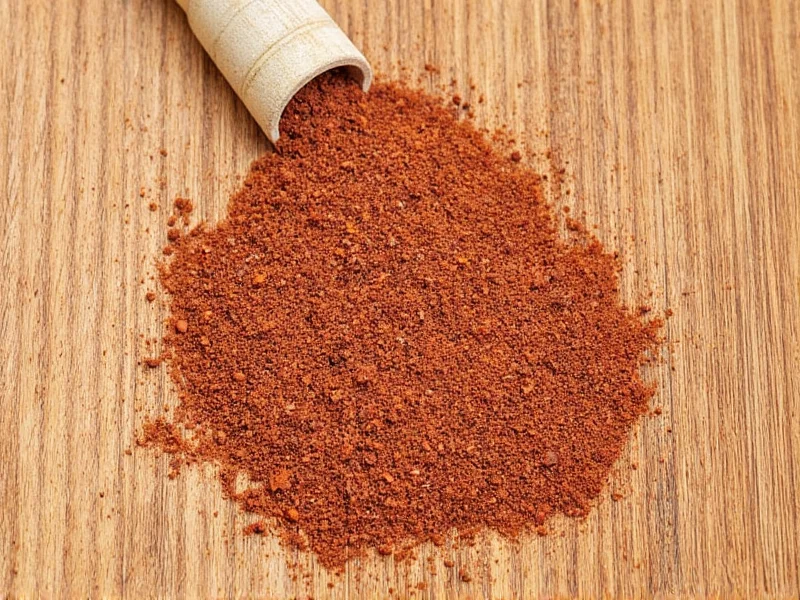Dry ranch seasoning has become a kitchen staple for home cooks seeking the beloved ranch flavor in versatile, shelf-stable form. Unlike liquid ranch dressing that requires refrigeration and has limited culinary applications, the powdered version transforms ordinary dishes with that distinctive tangy, herbaceous profile while maintaining freshness for months.
What Exactly Is Dry Ranch Seasoning?
Dry ranch seasoning consists of dehydrated ingredients that recreate ranch dressing's complex flavor profile. The essential components include buttermilk powder (providing tanginess), garlic powder, onion powder, dried dill, dried parsley, and additional seasonings like paprika, black pepper, and salt. Some commercial blends incorporate maltodextrin as a carrier or anti-caking agent, while homemade versions rely on pure spice combinations.
Understanding how dry ranch seasoning differs from liquid ranch is crucial for proper usage. Liquid ranch contains buttermilk, mayonnaise, and sour cream as base ingredients, requiring refrigeration and limiting its application to cold dishes or as a finishing sauce. The dry version eliminates moisture, concentrating flavors while enabling incorporation into baked goods, meat rubs, and heated dishes without altering texture or causing separation.
Creating Homemade Dry Ranch Seasoning
Many home chefs prefer making dry ranch seasoning at home to control ingredients and avoid preservatives. This simple recipe yields a versatile seasoning blend:
| Ingredient | Amount | Function |
|---|---|---|
| Buttermilk powder | 3 tablespoons | Provides signature tang |
| Garlic powder | 1½ tablespoons | Essential savory base |
| Onion powder | 1½ tablespoons | Depth of flavor |
| Dried dill | 1 tablespoon | Signature herb note |
| Dried parsley | 1 tablespoon | Grassy freshness |
| Sea salt | 1 teaspoon | Flavor enhancer |
| Black pepper | ½ teaspoon | Subtle heat |
| Paprika | ½ teaspoon | Color and mild sweetness |
Mix all ingredients thoroughly in a small bowl, then store in an airtight container. This homemade dry ranch seasoning recipe produces approximately ¾ cup of seasoning blend. For optimal flavor, allow the mixture to rest for 24 hours before use, giving the ingredients time to meld.
Practical Applications in Cooking
The versatility of dry ranch seasoning makes it invaluable for creative cooking. When exploring how to use dry ranch seasoning in recipes, consider these applications:
- Meat seasoning: Rub onto chicken, beef, or pork before grilling or roasting
- Vegetable enhancement: Toss with roasted vegetables or salad greens
- Baked goods: Incorporate into bread, biscuits, or crackers
- Dips and dressings: Mix with sour cream, Greek yogurt, or mayonnaise
- Marinades: Combine with oil and vinegar for flavorful marinades
- Popcorn seasoning: Sprinkle over freshly popped corn
When using dry ranch seasoning as dry ranch seasoning substitute for liquid, remember the conversion ratio: 1 tablespoon of dry mix combined with 2-3 tablespoons of liquid (buttermilk, sour cream, or mayonnaise) creates approximately ¼ cup of ranch dressing. This ratio allows precise control over dressing consistency.
Storage and Shelf Life
Proper storage ensures maximum flavor retention for your dry ranch seasoning. Keep commercial or homemade blends in airtight containers away from heat, moisture, and direct sunlight. When stored correctly, dry ranch seasoning storage tips indicate a shelf life of 6-12 months for optimal flavor, though it remains safe indefinitely if kept dry.
Check for freshness by examining color and aroma. If the seasoning has faded significantly or lost its characteristic fragrance, it's time for replacement. Avoid storing near strong-smelling spices, as the fine powder readily absorbs surrounding odors.
Common Questions About Dry Ranch Seasoning
Understanding best dry ranch seasoning ingredients helps customize blends to personal taste preferences. While traditional recipes maintain consistent core components, adventurous cooks might experiment with additions like dried chives, lemon zest, or cayenne pepper for personalized variations.
For those wondering what to do with dry ranch seasoning packet beyond the intended recipe, consider these creative uses: flavor roasted nuts, season homemade potato chips, mix into meatloaf, or incorporate into deviled egg filling. The concentrated flavor works well in any application requiring subtle herbaceous notes with tangy undertones.
Can I use dry ranch seasoning instead of liquid ranch in dips?
Yes, combine 1 tablespoon of dry ranch seasoning with 3 tablespoons of sour cream, Greek yogurt, or mayonnaise to create an instant dip. Adjust liquid content to achieve your preferred consistency while maintaining authentic ranch flavor.
How do I convert a liquid ranch recipe to use dry seasoning?
Replace each ¼ cup of liquid ranch dressing with 1 tablespoon of dry ranch seasoning plus 2-3 tablespoons of the liquid base from your recipe (buttermilk, sour cream, or mayonnaise). This maintains flavor profile while adjusting for moisture content.
Is homemade dry ranch seasoning healthier than store-bought?
Homemade versions typically contain fewer additives and preservatives. By making your own dry ranch seasoning, you control sodium content and avoid anti-caking agents like maltodextrin found in many commercial blends, resulting in a cleaner ingredient profile.
Can I use dry ranch seasoning in baking?
Absolutely. Dry ranch seasoning works well in savory baked goods like biscuits, scones, and breads. Add 1-2 tablespoons per 2 cups of flour to incorporate ranch flavor without affecting dough consistency, creating delicious herb-infused baked items.
What's the difference between ranch dressing mix and dry ranch seasoning?
Ranch dressing mix typically contains additional thickeners and sugars designed specifically for creating dressing, while dry ranch seasoning is a purer spice blend intended for broader culinary applications. Seasoning blends generally have simpler ingredient lists focused on flavor rather than functionality.











 浙公网安备
33010002000092号
浙公网安备
33010002000092号 浙B2-20120091-4
浙B2-20120091-4